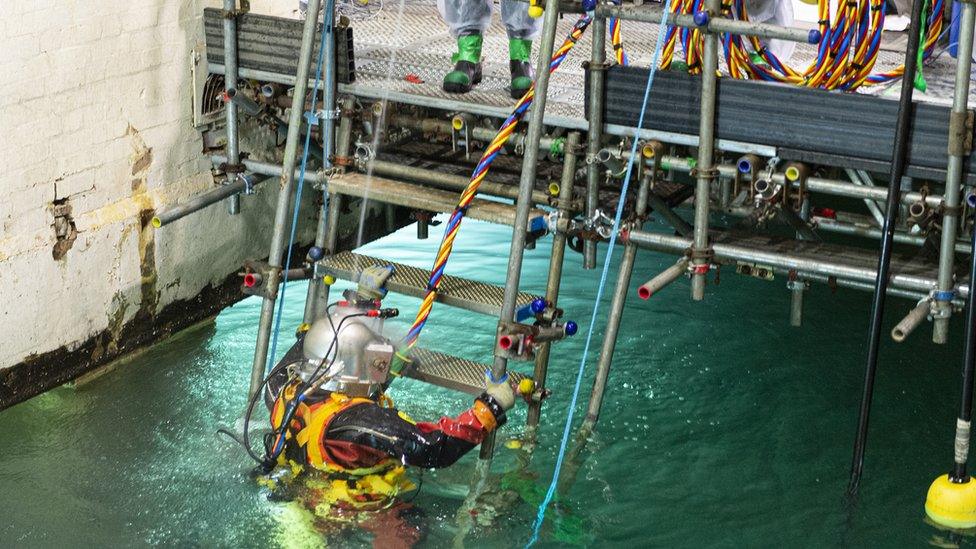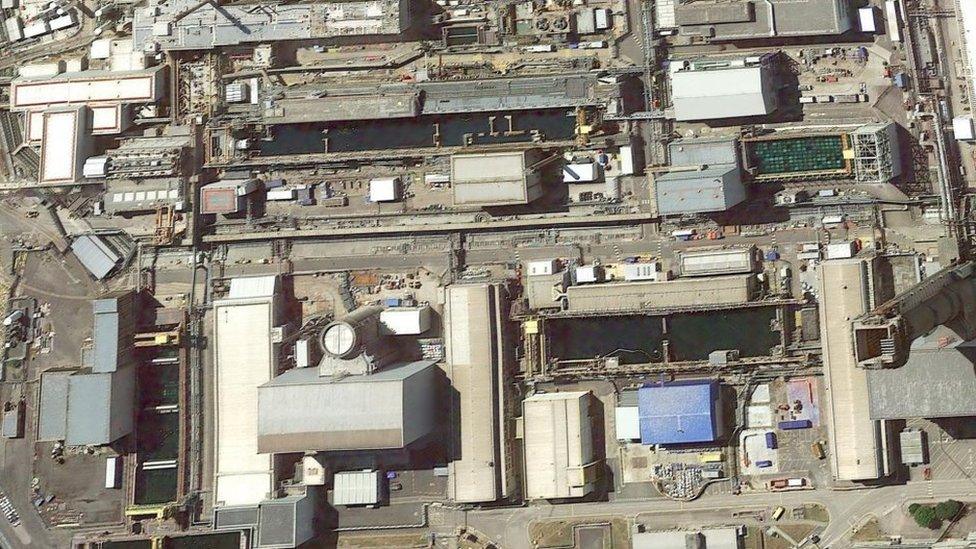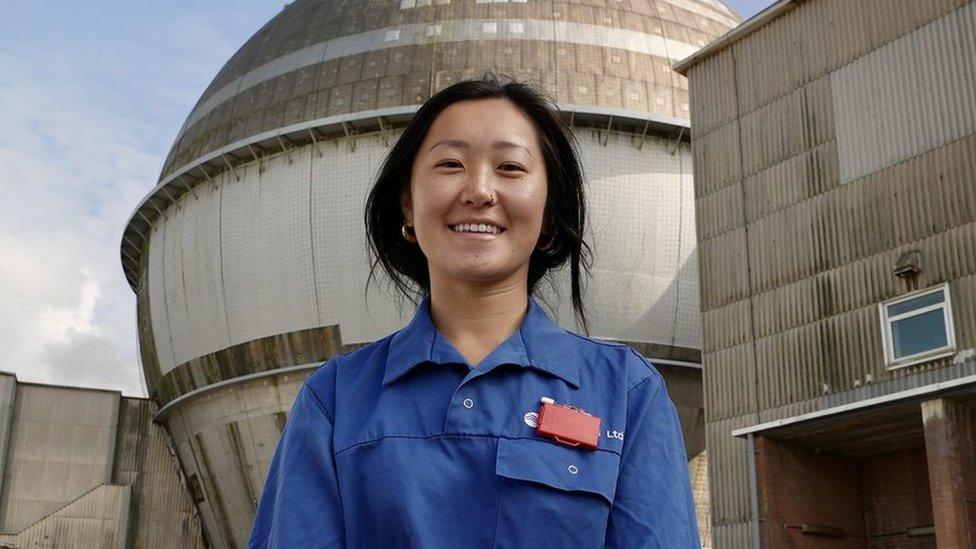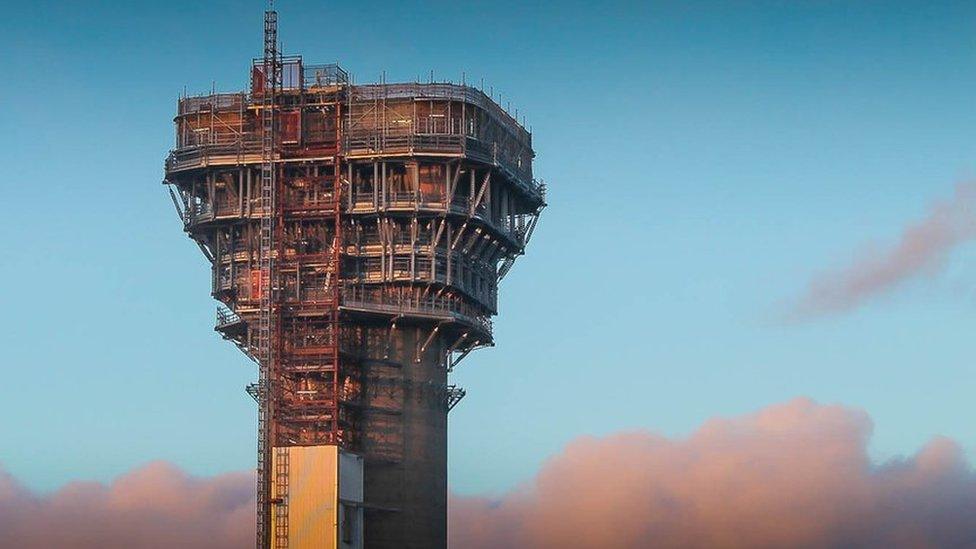Divers enter Sellafield nuclear pool for first time in 65 years
- Published

Divers have been working for up to three-and-a-half hours at a time cleaning the pool
Divers have entered a nuclear fuel storage pond for the first time in 65 years.
The 330ft (100m)-long outdoor pool at Sellafield in Cumbria was built in the 1940s for use by Windscale Piles, the site's first nuclear reactors.
It went out of use in the 1960s and is now being cleared as part of the wider Sellafield decommissioning programme.
Records show it was last entered in 1958 to repair a broken winch. Divers are working in shifts to clear sludge.
A Sellafield spokesman said Josh Everett, a diver from the specialist US nuclear diving team Underwater Construction Corporation, had become the first person in more than 60 years to descend a ladder and work in "one of the most unique workplaces in the world".
The pond was used for the cooling, storage, and de-canning of spent fuel from the reactors as part of the UK's post-war atomic weapons programme.

Nuclear materials are being cleared from the Sellafield site including its large pools
Robots have been used to retrieve and "safely store" the bulk of equipment from the pond but it "remains one of the most complex decommissioning challenges in the world and a priority project for Sellafield", the spokesman added.
Divers entered the pond via a specially installed access platform and positioned themselves on a metal dive stand with a shielded floor.
From there they were able to work in shifts of up to three-and-a-half hours at a time to retrieve sludge and debris from the pond floor, corners and other hard-to-reach areas.

Sellafield sits on the Cumbria coast near Seascale
Carl Carruthers, head of programme delivery for Legacy Ponds, said: "The team are used to diving in toxic and hazardous environments all over the world, including inside nuclear reactor vessels, but this is a first for us.
"Safety has been our priority throughout, and the divers are monitored and communicating with the dive supervisor at all times.
"Their work has helped us make real progress in cleaning up the pond and our site mission to deal with the nuclear legacy and create a clean and safe environment for future generations."
Allow YouTube content?
This article contains content provided by Google YouTube. We ask for your permission before anything is loaded, as they may be using cookies and other technologies. You may want to read Google’s cookie policy, external and privacy policy, external before accepting. To view this content choose ‘accept and continue’.
Once all of the waste materials have been removed from the pond the water will be removed, ready for final demolition of the building.
The decommissioning work has been estimated to have cost about £212m and will be completed by 2039, Sellafield added.

Follow BBC North East & Cumbria on Twitter, external, Facebook, external and Instagram, external. Send your story ideas to northeastandcumbria@bbc.co.uk, external.
- Published27 September 2022

- Published1 April 2022

- Published14 November 2021
